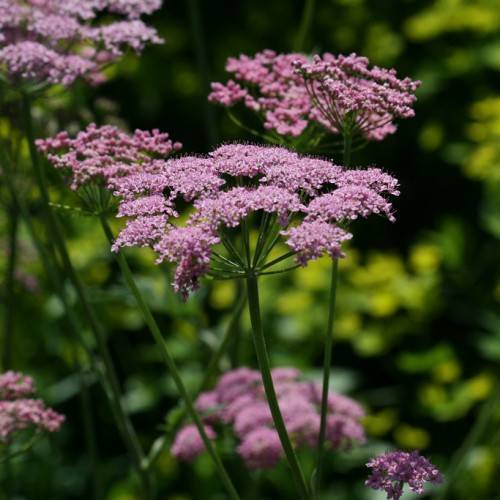
greater burnet
Pimpinella major 'Rosea'
Cycle:
Herbaceous Perennial
Watering:
Average
Hardiness Zone:
5 - 8
Flowers:
Flowers
Sun:
Full sun,part shade
Leaf:
Yes
Growth Rate:
Low
Maintenance:
Low
Drought Tolerant:
Yes
Salt Tolerant:
Yes
Care Level:
Medium
watering
Greater burnet (Pimpinella major 'Rosea') should be watered when the top 2-3 inches of soil has become dry. It requires moderate amounts of water but should not be watered excessively. To ensure that the soil remains moist but not boggy, the plant should be watered once every 7 to 10 days, depending on the local temperature and the type of soil. If the soil appears to be drying out more quickly, increase the frequency of watering. Avoid overwatering as this can lead to root rot.
sunlight
The greater burnet (Pimpinella major 'Rosea') should receive full sun or at least 6 hours of direct sunlight each day. During the hotter months, some shade or filtered sun in the afternoon may help the plant from getting sunburned. In the colder months, the plant should receive direct sunlight throughout the day. For optimal growth and flowering, the greater burnet should get the most direct sunlight possible.
pruning
Greater burnet (Pimpinella major 'Rosea') should be pruned in the early spring before new growth occurs. Pruning should involve removing any dead, diseased, or damaged stems as well as pruning off any overcrowded branches. Pruning should not be too severe as it can damage the shrub, so the aim should be to prune as little as possible while still keeping an attractive and well-maintained shape.
